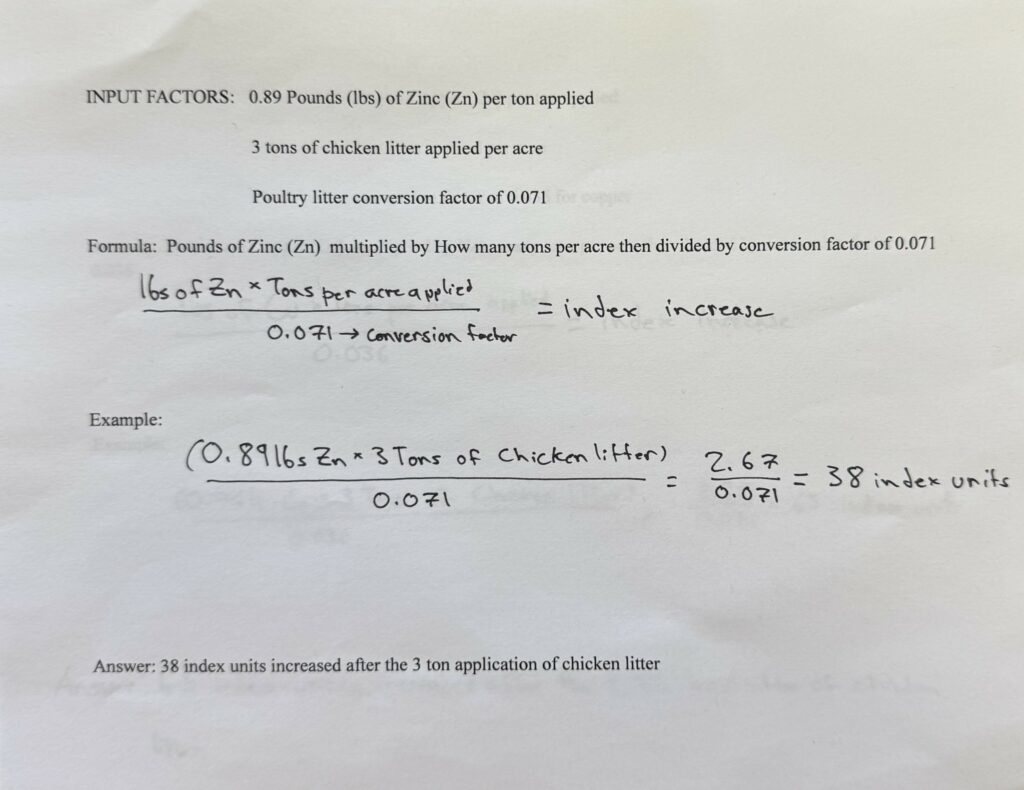Zinc Toxicity
go.ncsu.edu/readext?1063964
en Español / em Português
El inglés es el idioma de control de esta página. En la medida en que haya algún conflicto entre la traducción al inglés y la traducción, el inglés prevalece.
Al hacer clic en el enlace de traducción se activa un servicio de traducción gratuito para convertir la página al español. Al igual que con cualquier traducción por Internet, la conversión no es sensible al contexto y puede que no traduzca el texto en su significado original. NC State Extension no garantiza la exactitud del texto traducido. Por favor, tenga en cuenta que algunas aplicaciones y/o servicios pueden no funcionar como se espera cuando se traducen.
Português
Inglês é o idioma de controle desta página. Na medida que haja algum conflito entre o texto original em Inglês e a tradução, o Inglês prevalece.
Ao clicar no link de tradução, um serviço gratuito de tradução será ativado para converter a página para o Português. Como em qualquer tradução pela internet, a conversão não é sensivel ao contexto e pode não ocorrer a tradução para o significado orginal. O serviço de Extensão da Carolina do Norte (NC State Extension) não garante a exatidão do texto traduzido. Por favor, observe que algumas funções ou serviços podem não funcionar como esperado após a tradução.
English
English is the controlling language of this page. To the extent there is any conflict between the English text and the translation, English controls.
Clicking on the translation link activates a free translation service to convert the page to Spanish. As with any Internet translation, the conversion is not context-sensitive and may not translate the text to its original meaning. NC State Extension does not guarantee the accuracy of the translated text. Please note that some applications and/or services may not function as expected when translated.
Collapse ▲As preparations for the upcoming season approach, Pitt county growers are preparing their fields for a new crop. It’s important to note that when applying poultry litter that a waste report is an important part of knowing what is being applied to your fields.
Zinc Toxicity
Zinc is a micronutrient needed in crop systems to function properly. Usually the zinc content in poultry litter is higher than other fertilizers due to the feed that is used in poultry production. When applying litter to the field, one must recognize the lack of mobility of zinc in soils. Once zinc is in a soil system, its amendment options are limited to Soil Turnover and pH adjustments. Below is a table explaining Zn-I thresholds.
| Zinc | 300 | Caution level for peanut. Peanut could show toxicity at low pH |
| 500 | Critical toxicity threshold for peanut. Do not plant peanut. | |
| 2000 | Caution level for all other crops. Some crops may show toxicity at low pH. Seek alternative sites for zinc containing materials, such as manures. | |
| 3000 | Cease application of zinc, including animal manures. Maintain soil pH at or above 6.0 for all sites. |
Soil Turnover
Soil Turnover is the process of tilling the soil to get a more homogenous soil. This practice is Ideal for no till or minimum tillage systems to distribute the zinc and copper in the soil, avoiding a concentrated band of these nutrients. When turning over soil, go no deeper than the A horizon.
pH Adjustments
Liming soil to a higher pH slows zinc and copper in the soil causing phytotoxic effects to reduce in the plant. It is recommended to lime to 6.5 to 6.8 if experiencing zinc or copper toxicity.
How to avoid Zinc toxicity?
The best way to manage zinc toxicity is to closely monitor the input of zinc from your waste application. Dr. Steph Kulesza and Dr. Luke Gatiboni have a formula to track the index changes based on zinc applied per ton. Below is that formula and an example of how it works.
Zinc, copper, and Manganese Toxicity Management Tool
Pitt county extension has created a tool to help growers track what the waste analysis reports from the NCDA lab translate to on the farm. This tool has boxes in which a grower can take the numbers they receive off of their waste repost and predict what the index increase will be. Access the viewer copy below. Once there, download your own copy and begin inputing values from your waste report.




